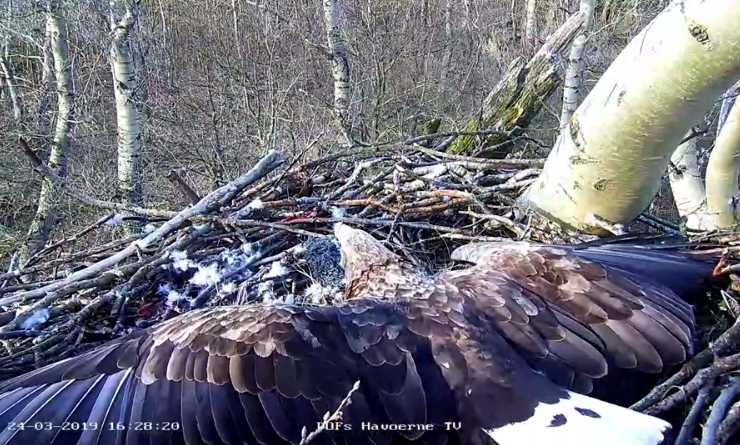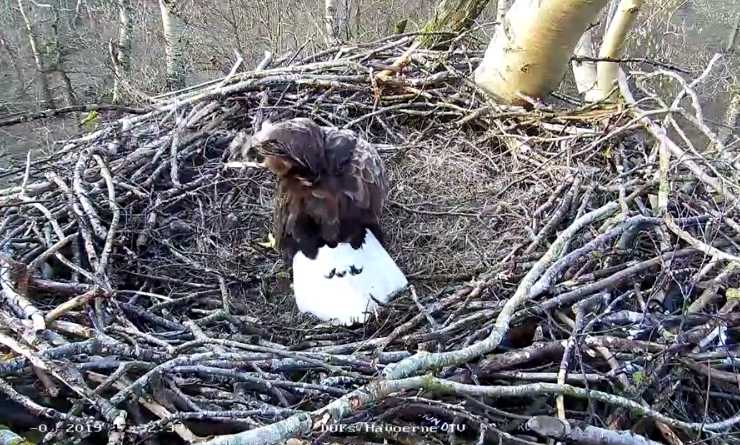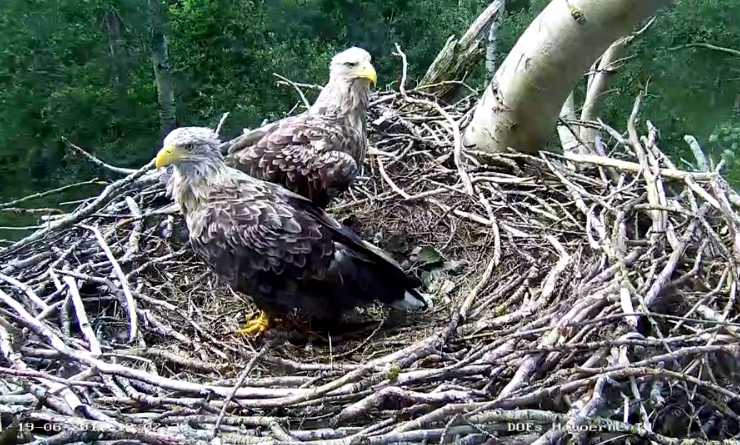Shift change. You can see the spot where the female perches near the nest.
I think it is the same couple who visited the nest last spring.
24-03-2019

30-03-2019

19-06-2019

Moderator: Moderators








You might say that. We have seen it at the Durbe nest and At Smøla, Norway.So it takes a year to bond (I think about the Norvegian nest)




AFAIK there are no Red Deers in Denmark, but Roes do :-)Owlie wrote: ↑March 22nd, 2020, 7:52 pm I meant nor reindeers, capricorns or wild horses. Roe would be the nearest translation to what I meant, compared with the word "rådjur" in Swedish, which language I also can somewhat. Deer sounds more like animals we have here in North Finland, they are relatives to reindeers, but I would be surprised if they wandered so south as in Denmark.
martinmiethke wrote: ↑March 22nd, 2020, 8:01 pm AFAIK there are no Red Deers in Denmark, but Roes do :-)
These days are over now. The public is now supposed to take care of the eagles by keeping distance to eagle nests. And respect the warnings set up around most nests. This nest is even protected byOwlie wrote: ↑March 22nd, 2020, 8:20 pm
On another LK Forum some years ago it was advised not to publish too detailed situation description of the nests, just in case ... there are also people who don't appreciate wild animals. Maybe you could remove the most detailed pictures in order to ensure a peaceful nesting for the bird family?




